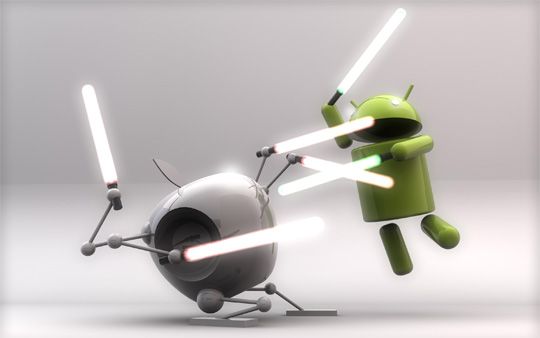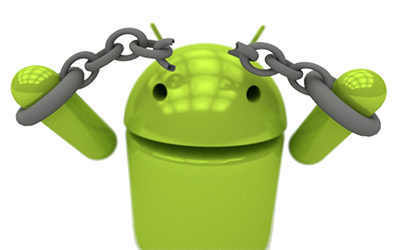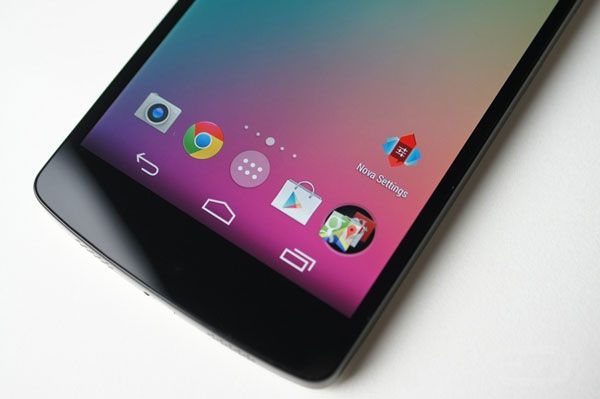The war between iOS and Android fans goes way, way back. On online spaces and forums, you will always bump into enthusiasts of either OS. They’ll defend it, attack whoever criticizes it, and type long rants on how their favorite OS is the superior mobile operating system since sliced bread. While I’m very passionate about Apple products in general, I wouldn’t call myself a hardcore fanboy, for I criticize the company as I see fit. However, based on facts, personal experiences, and different opinions, I will say that Android is too unnecessarily gimmicky. Whether you like it or not, iOS is a better OS than Android for the average user.

Once upon a time, I was an Android Fanboy myself, for several years actually. Eventually, I made the switch to Apple’s Ecosystem for a few reasons that accumulated over time. In heated arguments between Apple and Google fighters, you will hear words like customizations, freedoms, walled garden, limitations, modding, sheep, privacy, etc. So what is each side trying to defend and express about their respective OS of choice?
myself, for several years actually. Eventually, I made the switch to Apple’s Ecosystem for a few reasons that accumulated over time. In heated arguments between Apple and Google fighters, you will hear words like customizations, freedoms, walled garden, limitations, modding, sheep, privacy, etc. So what is each side trying to defend and express about their respective OS of choice?
Apple’s iOS versus Google’s Android
Surface level
When it comes to comparing these two operating systems, we first hear of how iOS is more private and secure — yet limited — compared to Android’s powerful and flexible customizations. Years ago, iOS was indeed too limited, but to this day this argument lives on. Objectively, Android is more customizable, but the question is: Does an average user really need or even want all these customizations?
 At some point, both Android and iOS were too limited in their own ways. That was a catalyst in both operating systems’ modding communities. Rooting and Jailbreaking — respectively — became popular ways for users to break free from the chains of these systems. Tech-savvy users — for the most part — would install custom firmwares or mod their existing ones for different reasons. The most notable motivators included design/user-interface (UI) changes, piracy, and porting new OS features to older, unsupported devices.
At some point, both Android and iOS were too limited in their own ways. That was a catalyst in both operating systems’ modding communities. Rooting and Jailbreaking — respectively — became popular ways for users to break free from the chains of these systems. Tech-savvy users — for the most part — would install custom firmwares or mod their existing ones for different reasons. The most notable motivators included design/user-interface (UI) changes, piracy, and porting new OS features to older, unsupported devices.
Eventually, this started slowing down in both communities. I used to personally have a few friends on each side who had rooted/jailbroken their phones, and I used to root my Android, too. Today, none of the close people in my life use mods of any kind on an OS level. Why? Because both operating systems have almost fully matured and neither of them is “too limited” anymore. Both the OSs successfully serve the functions that most people expect out of them, to the point that an exercise of rooting and jailbreaking becomes a hobby for your free time rather than a need for a proper functional smartphone.
Does an average user really need or even want all these customizations?
For some reason, Android fans still use the argument that iOS is too limited. I think it’s just an outdated belief from the times when both systems lacked main features and options. It’s true that Android has always been more adjustable than iOS, but I believe that the average user doesn’t need all of these extras that make setting up and navigating a device more complex. People don’t even change their phone ringtone or wallpaper these days, let alone bother with the hundreds of possibilities that rooting or jailbreaking would bring to the table. I am not saying that no one roots, jailbreaks or customizes their phone anymore — I am saying that the average user finds little to no need to even bother learning about these concepts anymore. As long as it just works, most people are happy with not fiddling with the established order.
User Interface and User Experience
Google just can’t make its mind when it comes to UI and UX. Every other year, it will release new guidelines related to its operating system’s interface. In its early stages, Android app icons used to have different, non-matching shapes. Years later, Google unified its apps’ icon shape, but it still offers different shape variations users can choose from. That’s not to mention all of the apps Google has killed and replaced by similar — sometimes less functional — alternatives. Android feels like one ginormous decade-long beta test run by Google, and it rings more true than ever with Android 12, the biggest change to the OS in a long time, which breaks plenty of things along the way.
Android feels like one ginormous decade-long beta test run by Google.
The average user dislikes inconsistencies. They want the familiar designs, apps, and options they already know to stay the same or gradually shift over time in a smooth manner. App icons on iOS have always had the same shape, and developers are forced to adopt that particular squircle, like it or not. So all apps are neatly placed on the Home Screen with no weird-shaped intruders around. Everything looks the same, and that is by design. Familiarity is underrated, especially when your smartphone and OS are expected to be used by literally billions of people with varying levels of tech expertise.
When it comes to navigating through the system, iOS is simpler and cleaner than Android — and I say this as someone who has used both. There are no advanced customizations that you get lost through. The gestures have been the same for years, too, unlike Android’s case. At first, Google’s mobile OS had physical back, home, and menu buttons. The menu button was then replaced by an app switching button. Eventually, the switch to digital buttons was made. Each OEM would settle for a certain arrangement of navigation buttons on their skinned Android. It is only recently that some uniformity seems to have settled in for navigation gestures, but it is still going to be a while for this uniformity to uniformly propagate around the world thanks to Android’s software update situation.

So Android users upgrading from one generation to another — whether from the same manufacturer or not — are so much more likely to find themselves dealing with a whole new set of gestures and buttons. And I can confidently say this because average, non-tech-savvy people around me would always need assistance when setting up a new Android. They would also complain about how different everything is. People shouldn’t need to re-learn and re-adjust every time they upgrade their phones. A smartphone is a tool for the average human to accomplish a certain task, and destroying muscle memory is a jarring experience for people who may not be as well versed with tech as the average XDA reader.
On the contrary, an iOS user would just back up their entire iPhone and restore it on a new one in an absolutely seamless manner. No surprises, no new mechanisms — except very rare ones, like the digital home button on the iPhone X — and no need to adapt all over again. You learn how to use iOS once, and your muscle memory always works its way through.
Stability, Performance, and Updates

When it comes to stability, iOS is objectively more stable than Android. As an iOS beta tester, even the very first developer beta released after WWDC is stable enough to use on my daily driver. While I face bugs here and there during the testing period, none of them have been bad enough to force me to roll back to a previous, public build. Stable iOS is more polished than Android, and that’s a fact — you can feasibly advise everyone to update their iPhones on day 1 of the stable update rollout. Average users want a phone that works as expected, and Android’s bugs and inconsistencies make it difficult for non-enthusiasts to stay excited about updates, even more so for the revolutionary ones.
Average users want a phone that works as expected, and Android's bugs and inconsistencies make it difficult for non-enthusiasts.
iOS is also a lighter operating system, despite it being relatively feature-rich. iPhones tend to have fewer gigabytes of RAM compared to rival Android phones; and iOS requires fewer resources because of its tight optimizations. So the overall experience ends up being smoother, despite the lower memory. I almost never face any lags on iPhones — something I used to encounter somewhat frequently on Google’s OS. The situation has improved on the Android end in recent years, but frame drops are still a common experience (and don’t even get my colleague Aamir started on Exynos).
As for updates, iPhones tend to receive major iOS updates for over half a decade. And Apple continues to release essential security fixes to even older models. On the contrary, Google only promises latest Pixel users at least 3 years of OS updates and 2 more for security patches. That’s nowhere near what Apple offers its mobile users. In fact, that’s one of the biggest reasons I switched from Android to iOS. I needed to get my hands on the latest and greatest software, without needing to upgrade my phone every other year. While an iPhone is more expensive than the mean price of an Android, upgrading phones frequently adds up too.
Apple’s Ecosystem makes life easier, too. If you own other Apple devices, your iPhone will fully integrate with them, even if it is a few generations old. Copy from iOS, paste on macOS. Type a document on your Mac, and sign it using your iPhone’s touch screen. Or take a screenshot on your Apple computer, and instantly annotate it on your phone. Handoff is simply magical, and Google can’t match what Apple has built so far in this particular domain.
Security and Privacy
One of the biggest arguments Android fans use against iOS is the inability to sideload apps. I get that sometimes users feel the need to install an app from a third-party source, but does an average user care about that? Probably not. I’ve been an iOS user for over 5 years now, and the inability to do that has never been a sore annoyance or a dealbreaker to me. The apps I use are all available on the App Store. And if you really do want to sideload, my colleague Adam uses AltStore to sideload apps onto iPhones.
 Piracy and modded apps/games are some of the many reasons Android users sideload apps (and yes, there are many other reasons too — I am not discounting those). As someone who is strictly against theft — digital or otherwise — modded and/or stolen paid apps mean nothing to me. I use the apps the way their developers intend, and so does the average user. This turns iOS into an objectively more secure OS. All apps have to go through Apple’s screening process, and malicious apps rarely ever make it through to the App Store. There’s an entire argument (and legal battle) to be had on Apple’s App Store monopoly, but at least as an average user, you’re relatively unlikely to get malware on your phone through the App Store.
Piracy and modded apps/games are some of the many reasons Android users sideload apps (and yes, there are many other reasons too — I am not discounting those). As someone who is strictly against theft — digital or otherwise — modded and/or stolen paid apps mean nothing to me. I use the apps the way their developers intend, and so does the average user. This turns iOS into an objectively more secure OS. All apps have to go through Apple’s screening process, and malicious apps rarely ever make it through to the App Store. There’s an entire argument (and legal battle) to be had on Apple’s App Store monopoly, but at least as an average user, you’re relatively unlikely to get malware on your phone through the App Store.
Statistically, Android is less secure than its rival. It’s subject to more malware, and its security doesn’t match that of Apple. iOS is indeed a walled garden, and that can be a good thing for average users who couldn’t care less about the freedoms and risks associated with an unsupervised ecosystem. On the App Store monopoly argument, Progressive Web Apps (PWAs) work as an alternative. While iOS doesn’t support notifications in PWAs, it does run them in full-screen mode, rather than in a Safari window. So the experience is decent and allows developers to deploy apps outside the Store, even if they get fewer privileges than native iOS apps.
When it comes to privacy, Google and Apple are almost on extreme opposite ends. Google makes most of its revenue through advertisements. So it collects as much user data as it can to make targeted ads more accurate. Apple, on the other hand, is limiting user tracking with a handful of features that only increase with every major release. For example, users can now stop apps from tracking them when using other apps and websites, see what sensors and data apps are accessing, hide their emails and IP addresses, and more.
Apple is fighting for users’ privacy, largely speaking, and that makes iOS a more private and secure mobile OS for user data. You know that Apple won’t sell your usage habits and interests to third parties. Additionally, it provides you with the tools that help limit what other companies can collect about you.
Google and Apple have been copying features from each other and the modding communities for years now. At this point, we have two mobile operating systems that offer almost the same set of main features. The difference is that iOS offers a more polished, stabler, and simpler experience, while Android feels half-baked, is buggier, and isn’t as private or secure. It’s true that Android offers more freedoms, but iOS is enough for an average user who just wants a phone that works.
iPhones work as you’d expect them to, get more years of software support, offer a more private and secure playground, and last longer. I never feel the urge to upgrade my iPhone before it’s worn out because it’s still receiving the latest iOS features, and the newer models don’t offer notable changes — to me at least.
![]()
We’ve reached a point where the two operating systems almost intersect, but now they continue to progress in parallel lines, one hair apart. They’ll never be the same, and that’s to the consumers’ advantage. Users who prefer endless customizations, theming, and freedoms can use Android. While those who just want a secure, private, long-lasting, and functional phone — that offers only everything they need and nothing more — can use iOS. So like it or not, iOS is indeed a better OS than Android for the average user.
Which mobile operating system do you use, and why? Let us know in the comments section below.
The post Like it or not, iOS is a better OS than Android for the average user appeared first on xda-developers.
from xda-developers https://ift.tt/3wJQy96
via IFTTT

No comments:
Post a Comment